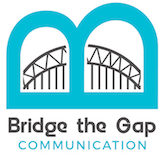Building a 2023 content marketing plan will require careful consideration and strategy to earn new business and build your following this year.
The last few years have felt like they’ve been consumed with an adjusted way of living. And now we’re dealing with economic woes that are leaving many marketers pessimistic about the future. A meager 1 in 5 marketers are optimistic about the economy leading into 2023.
So how can content help? Content offers organic website visitors and new leads if you’re employing the right strategy. Here’s what you need to know about top trends leading into the new year.
2023 Content Marketing Considerations
Wondering what you should include in your 2023 content marketing plan? Here are the top considerations you’ll want to include.
1. Facebook/LinkedIn Groups
Facebook Groups continue to gain momentum over business pages. That’s not to say you shouldn’t have a business page on Facebook as it has many benefits. However, it’s time to evaluate whether or not a Facebook Group might serve your purposes better.
Hosting a group allows for more interaction between your brand and your customers. So instead of just broadcasting information, you can engage in conversations with your customers.
For example, other users can post within a group so that it isn’t just your brand that’s constantly sharing information. Now, you can come in and share relevant articles that help answer their questions.
Or if the question isn’t relevant to what you do, sit back and observe. Learn areas of your business that you could expand with new products or services using insights from the conversations in your Facebook Group.
The same is true of LinkedIn. LinkedIn Groups allow you to assemble like-minded individuals to engage in meaningful conversations instead of just broadcasting who you are and what you do.
Consider creating groups or joining other people’s groups on these social platforms to grow awareness for what you do. This is a great way to grow your social media following organically, but know that it does take time and effort.
2. Blogging once a month at minimum
Another way to build your brand through content marketing is to develop a strategic plan for your blog. Starting now, you should be thinking about topics that help respond to customer needs.
For example, when I launched this blog in June, I actually developed the content ideas for the entire year. So this blog you’re reading right now was something I was thinking about six months ago.
You should be doing the same thing as you plan out your content marketing strategy for the year. Don’t just blog based on SEO research and keywords. Instead, blog based on what your consumers need. (Read more in: I’m Not a Robot. I’m a Freelance Writer for People First and Algorithms Second). This will help you immensely as you work to convert website visitors into prospects and prospects into customers.
If you don’t know what content might help your audience, ask them. Social media polling could help you gain some insights and ideas now so you can develop outstanding content in 2021.
3. Earning more online reviews (and using them effectively)
Wait, reputation management is part of content marketing? Yes, everything you do online is connected, including reputation management.
Earning more online reviews can help you add a review section to your website, create social media posts and improve SEO rankings.
Send out some emails to your customers now while they’re enjoying some downtime for the holidays. Ask for a review. It only takes a minute or two to offer feedback and consumers who love what you offer will gladly lend a hand.
4. Develop video content to accompany written content
People love videos. There’s a reason why video is now the primary content type across social media channels. I realize I’m recommending this on a blog with no videos, but I aspire to add them. My house is just noisy and chaotic since my assistants are two boys ages 4 and 1.5.
Video helps engage users in different ways. And by providing content in various mediums, you’ll meet users where they’re at and help them connect with you when and how it’s most convenient for them.
5. Offer content for various stages of the customer buying journey
Some content on my blog exceeds 2,000 words. Others barely scratch the surface of a topic at just 500 words. Some content aims to serve customers early on in their search while other content is designed to reach customers who know a bit more.
Ensure you have varying types of content. In some blogs and videos you might introduce a topic and use incredibly simple language. And in others, you might speak more like an expert. You need both types of content to reach your target audience.
The trend for blogs though is long-form in-depth content. And if it takes too long to publish this content, consider publishing less often and in long-form.
6. Automated emails for customers to get to know you
If you don’t have funnels set up on your website, you aren’t doing everything you can to capture your target audience and lead them on a customer buying journey with you.
Automated emails that trigger once a customer shows interest in your business will go a long way in developing new business from the effort you already put into your 2023 content marketing plan.
Building a 2023 Content Marketing Plan
Want assistance creating your 2023 content marketing plan? I love content marketing and would be excited to help you plan for a successful year. Contact me for a free consultation. If nothing else, I can arm you with helpful information to do it yourself if you’d prefer.
Content Marketing FAQs
Learn more about content marketing and top considerations for drafting this year’s plan from these FAQs.
What Should a Content Marketing Plan Include?
An effective content marketing plan starts with a clear understanding of your audience and their needs. Build customer personas and then decide what might be holding them back from purchasing with your company. This will prepare you for drafting meaningful content for this audience.
What Are the 7 Elements of a Marketing Plan?
Marketing plans should include the 7 P’s: price, product, place, promotion, process, people and physical evidence.
How Do You Structure a Marketing Plan?
A marketing plan should start with a clear strategy of who your audience is and what they need to know to purchase a product or service. The more time you spend on the upfront strategy sections, the more valuable you’ll find your marketing strategy to be.

